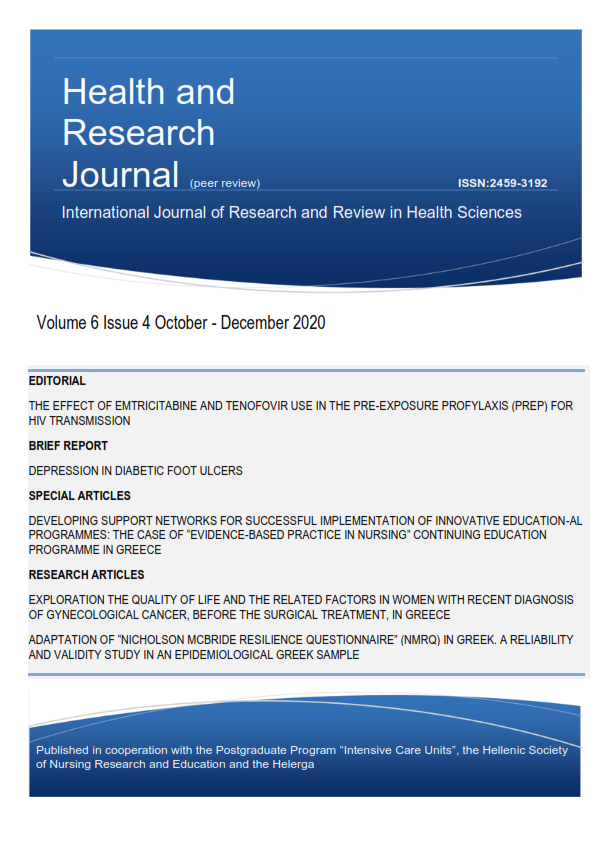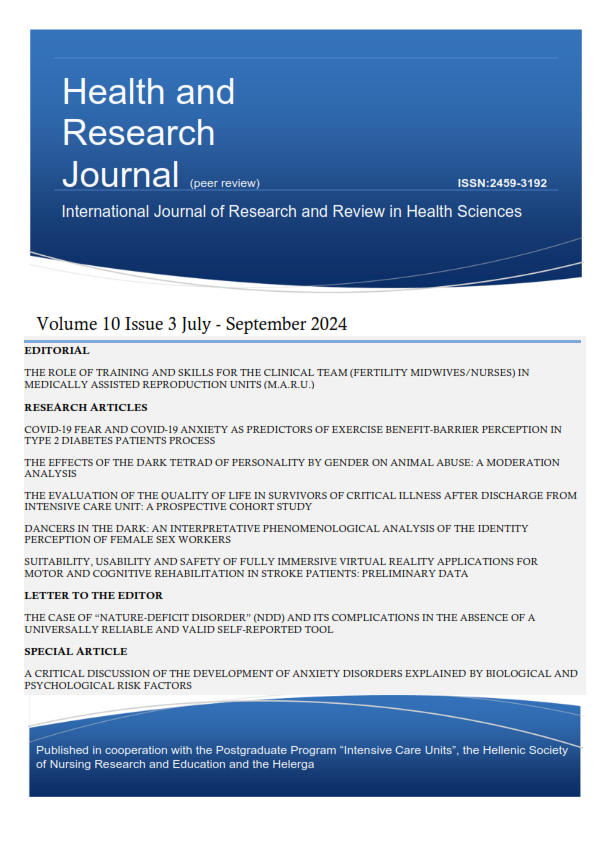Quality of life of patients undergoing hemodialysis

Abstract
Introduction: Chronic Renal Failure (CRF) is a chronic disease, which has a negative impact on the quality of patients’ life. The study of factors affecting the quality of life of these patients is necessary to investigate the impact of the disease in a biological, psychological and social level.
Aim: The purpose of this research study was to investigate the satisfaction of patients undergoing chronic hemodialysis and their perceptions of their quality of life.
Material and Method: The study sample consisted of patients undergoing chronic hemodialysis at a Dialysis Unit in Athens. The study lasted from January 2016 to March 2016. To measure the health related quality of patients’ life, the Greek version of the questionnaire WHOQOL-BREF of the World Health Organization was used. The completion of the questionnaires was made by the method of the structured interview. A total of 70 questionnaires were completed.
Results: According to the study results, most of the patients considered the quality of their life as good (48.6%), while the 8.5% described it as bad or very bad. The lowest satisfaction rates associated with issues of physical health and independence with mean (12.89 ± 2.23) and the highest with social relations (14.68 ± 1.50).
Conclusion: The effect of Chronic Renal Failure on the physical, psychological and social background of patients on dialysis is an essential factor in creating a tailor-made holistic treatment program, adjusted to the specific needs of each patient.
Article Details
- How to Cite
-
Garofyllou, G., Kelesi, M., Gerogianni, G., Tsaras, K., Fasoi, G., Kaba, E., & Stavropoulou, A. (2017). Quality of life of patients undergoing hemodialysis. Health & Research Journal, 3(1), 61–73. https://doi.org/10.12681/healthresj.20434
- Section
- Original Articles
Copyright notice:
The journal "Health and Research Journal" reserves the rights for copyright of the content of the website and also the copyright of the articles published.
By virtue of their appearance in this journal, the articles are free to be used for non-commercial purposes. However, the articles cannot and must not be used in anyway, published elsewhere or modified without any reference to the author and the first publication of the article.




